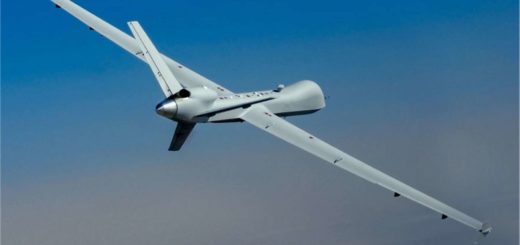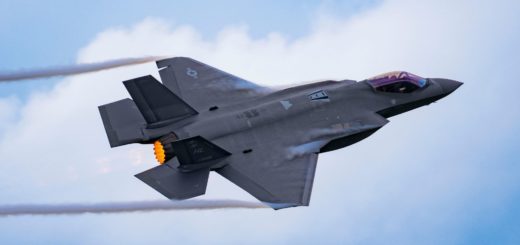Big fires spur innovation: in search of next-generation firefighting aircraft

As climate change drives increasingly severe wildfire seasons around the world and blazes grow bigger and more destructive, governments are being prompted to invest in expanding their aerial firefighting capabilities.
However, at present the purpose-built aircraft options available on the market to meet this escalating demand are somewhat limited.
The workhorse of many firefighting fleets has long been the Canadair CL-215 amphibious aircraft, and its modernized version, the CL-415. A well-proven decades-old design, it continues to serve as the backbone of aerial operations in many countries around the world.
This iconic aircraft, often painted by its operators in eye-catching yellow and red tones, is a classic summer sight in Mediterranean countries, as it equips the aerial fire-fighting fleets of countries like Spain, France, Italy and Greece. Its current operators include the Spanish and Hellenic Air Forces, France’s civil protection agency (‘Securité Civile’ in French), as well as private contractors such as Avincis.
Well aware of the fact that the CL-215/CL-415 is an aging platform – the CL-215 first flew in 1967 and its immediate successor, the CL-415, in 1993 – its manufacturer, Canada-based DeHavilland Canada, is now working on a contemporary iteration of this popular model.
Still under development as of April 2025, the new Canadair CL-515 will share many of the characteristics of its predecessors, but with modern avionics and some enhanced capabilities.
Speaking with AeroTime, Roberto Marcolini, Managing Director Fixed Wing Italy at Avincis, highlighted the water discharge capacity and maneuverability of the Canadair family of aircraft. Avincis Italy operates the largest fleet in the world of Canadair firefighting aircraft. The company’s 18 C-215/CL-415 aircraft operate for Italy’s civil protection service, and, when required, under the aegis of the EU’s RescEU program.
RescEU was created in 2019 as part of the EU’s Civil Protection Mechanism, to serve as a pool of resources that can be mobilized whenever member states face overwhelming natural disasters beyond their national response capabilities. In its firefighting aircraft procurement aspect, RescEU aims to establish a permanent and dedicated aerial firefighting capacity which can be shared by the EU member states.
The program allocated funds for the purchase of amphibious aircraft specifically designed for firefighting operations.
In fact, the CL-515 was selected in 2024 by the European Commission to modernize the EU’s aerial firefighting fleet. Under this program, a total of 22 CL-515 aircraft are to be purchased, twelve of which directly by the EU, with some individual member states placing additional supplementary orders for a total of ten additional aircraft which will join their national fleets.
The entrepreneurs aiming to disrupt the aerial firefighting market
For some considerable time, the Canadair family of aircraft has been the only option in the market when it comes to water-scooping firefighting aircraft, and the C-515 builds upon that success. However, this may be about to change.
In the coming years, the aerial firefighting landscape is likely to become a good deal more competitive, as several ambitious aerospace startups are racing to develop new generation, clean-sheet aircraft that can address the growing global firefighting requirements.
“We would welcome competition in this market, particularly if it addresses key points for us, like having advanced avionics and, very importantly, better resistance to water-induced corrosion, one of the main challenges we face”, said Roberto Marcolini of Avincis when asked about the future of aerial firefighting by AeroTime.
Expanded payload capacity, fly-by-wire systems and extensive use of composites in its manufacturing (a key feature to minimize sea salt corrosion) are all elements that have been taken into account by the current crop of aerial firefighting entrepreneurs.
These include Roadfour, a Belgian startup which is working on an amphibious aircraft called ‘Seagle’.
Roadfour / SeagleThere’s also Bordeaux-based Hynaero, which signed a partnership deal with Airbus in March 2025 to develop its Fregate-F100 firefighting aircraft, as well as the industrial ecosystem that would be needed to build it.
HynaeroThe stakes here are high, because this is a rather niche market where it is likely that the winner takes all. Expert sources consulted by AeroTime estimate that the addressable market for firefighting aircraft is in the range of €16 to 20 billion, with a clean-sheet aircraft requiring around €1 billion to develop and certify.
This is why Italy-based 19-01, an Italian startup which aims to have a clean-sheet amphibious aircraft in the market by 2030, is emphasizing the multi-role nature of its design.
Speaking with AeroTime, 19-01 founder and CEO, Renato Sacchetti, explained that, in his opinion, the financial viability of a new amphibious aircraft development program would rely entirely on its capacity to offer a range of missions, such as search and rescue and maritime patrol.
RELATED
Pentagon selects Aurora Flight Sciences to develop large new generation seaplane
In a context of growing geopolitical tensions, many governments may also see the development of new amphibious platforms as a matter of strategic independence.
As such, both Russia and China also have their own domestically developed amphibious aircraft – the Beriev Be-200 and AVIC’s AG600, respectively. The latter is a rather large and new design, having received its type certification from the Civil Aviation Administration of China (CAAC) on April 20, 2025.
At the other end of the size spectrum, drones and unmanned platforms are likely to also play an increasing role in firefighting operations.
In this segment, some advanced air mobility developers have developed firefighting versions of eVTOL aircraft and unmanned aircraft. Often these appear to be directed more towards fighting urban fires, as is the case of EHang’s EH-216F, but some companies like Barcelona-based Singular Aircraft are also targeting the forest firefighting market.
The relatively smaller payloads generally place these drones in a different market segment altogether, though.
For reference, Singular Aircraft’s Flyox firefighting drone can carry up to 1.5 tons of water, which is about half the capacity of a firefighting Air Tractor aircraft and one quarter of the water carrying capacity of a CL-415. The newer CL-515 will be able to drop up to seven tons of water or retardant, while the Seagle and Fregate-F100 are in the vicinity of 12 tons.
Despite these payload limitations, drones may be able to contribute in other ways, for instance data gathering, collecting real time information by getting close to the fire and helping coordinate other aerial assets which bring heavy water attack capabilities to the fight.
This interconnected philosophy is also at the core of the firefighting concept being developed by 19-01. Its founder Renato Sacchetti emphasized that large, water-scooping planes must be considered as one element in an integrated ecosystem of different assets interacting coordinately, hence the need for modern avionics and communications systems onboard.
However, Marcolini of Avincis wouldn’t rule out a more direct role for drones in the longer-term future, as technological change seems to be coming fast at the aerial firefighting scene.
RELATED
Avincis: the largest helicopter operator you’ve never heard of
The post Big fires spur innovation: in search of next-generation firefighting aircraft appeared first on AeroTime.
As climate change drives increasingly severe wildfire seasons around the world and blazes grow bigger and more destructive,…
The post Big fires spur innovation: in search of next-generation firefighting aircraft appeared first on AeroTime.







